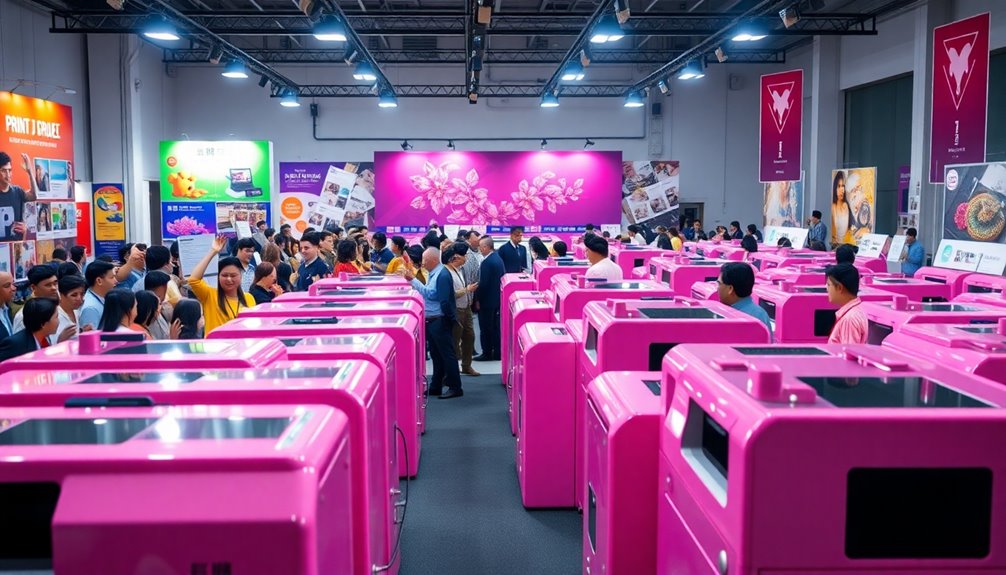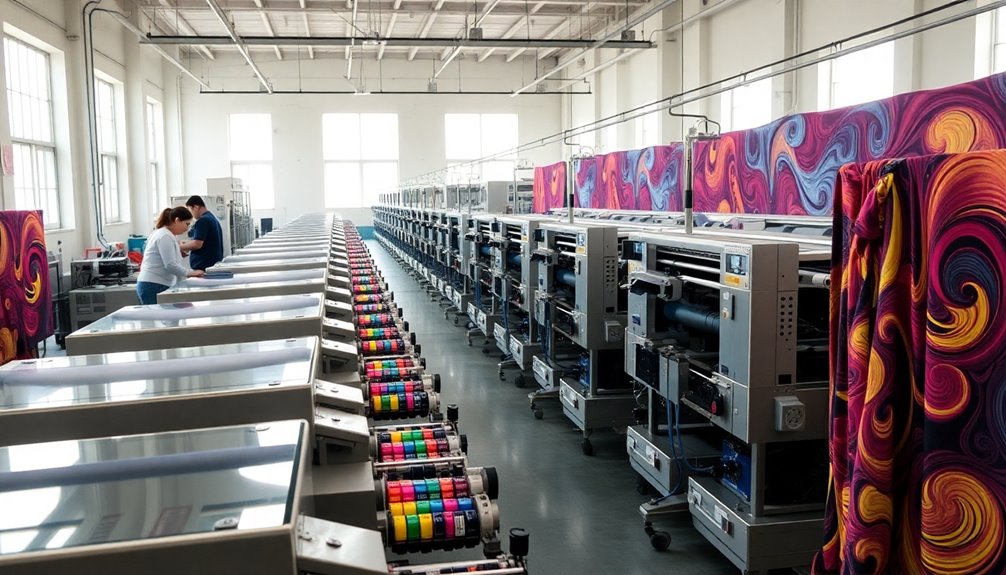Tissue paper and crepe paper serve different purposes in crafting and decorating. Tissue paper is thin, delicate, and best for wrapping fragile items or creating layered, lightweight designs. Crepe paper is stretchy, textured, and great for making ruffles, streamers, and more dynamic decorations. Knowing their unique qualities helps you choose the right material for your project. Keep exploring to discover how each material can bring your ideas to life.
Key Takeaways
- Tissue paper is thin, delicate, and lightweight, ideal for layering and intricate designs; crepe paper is textured, stretchable, and resilient.
- Tissue paper is best for wrapping fragile items and delicate crafts, while crepe paper excels in making ruffles, streamers, and textured decorations.
- Crepe paper maintains its shape when stretched and handles more stress, unlike tissue paper, which tears easily when handled roughly or wet.
- Tissue paper offers a refined, lightweight appearance, whereas crepe paper provides a vibrant, bouncy, and textured visual effect.
- Selecting between them depends on project needs: tissue for fragile, layered designs; crepe for flexible, textured embellishments.

When choosing between tissue paper and crepe paper, understanding their differences can help you make the right decision for your project. Both materials are popular for wrapping, decorating, and crafting, but they serve different purposes based on their unique properties. One key factor to contemplate is wrapping techniques. Tissue paper is thin, delicate, and flexible, making it ideal for wrapping fragile items or creating layered, intricate designs. Its lightweight nature allows you to fold, crumple, or layer it easily without adding bulk. Crepe paper, on the other hand, has a crinkled texture that provides elasticity and stretch, making it suitable for creating ruffles, streamers, or balloon decorations. Its ability to stretch and bounce back makes it easy to manipulate into various shapes, but it’s less suitable for wrapping small, fragile items because of its textured surface and less precise folds.
Tissue durability is another important aspect to think about. Tissue paper is generally more fragile and prone to tearing, especially when wet or handled roughly. It’s great for decorative accents or wrapping items that won’t be subjected to much movement, but it doesn’t hold up well under stress. Crepe paper is more resilient and retains its shape better when stretched or manipulated, thanks to its crinkled texture. It can withstand more handling without tearing, making it suitable for projects that require durability and flexibility. However, it’s not as delicate and refined in appearance as tissue paper, which might be a disadvantage if you’re aiming for a sleek, polished look.
In terms of wrapping techniques, tissue paper often involves layering, folding, and delicate embellishments, requiring a gentle touch to avoid tears. It’s perfect for wrapping small gifts, making floral arrangements, or creating decorative details. Crepe paper’s elasticity allows you to stretch and mold it into various shapes, making it ideal for creating textured decorations, garlands, or balloon accents. Its ability to hold its shape once stretched means you can craft dynamic, eye-catching designs that stand out. Additionally, understanding the durability of each material can help you choose the right option for projects that need to withstand handling and movement. Ultimately, your choice hinges on what you value most: the delicacy, finesse, and lightweight feel of tissue paper, or the stretch, resilience, and textured appearance of crepe paper. Understanding these differences ensures that you select the right material for your specific project needs.
Frequently Asked Questions
Can Tissue Paper Be Reused After Wrapping Gifts?
Yes, you can reuse tissue paper after wrapping gifts, but it depends on its durability. If the tissue paper is still in good condition without tears or stains, you can carefully flatten and store it for future use. Reusing tissue paper not only saves money but also helps the environment. Just handle it gently, and avoid crumpling or damaging it to maximize its lifespan and maintain its decorative appeal.
Is Crepe Paper Environmentally Friendly and Biodegradable?
Think of crepe paper as a gentle breeze in a world craving greener choices. Yes, it’s eco-friendly and biodegradable, making it a smart choice for your environmental conscience. Its biodegradable benefits mean it’ll return to the earth without leaving a trace, like a whisper fading into the wind. By choosing crepe paper, you embrace eco-friendly options that support sustainability, turning your gift wrap into a small act of kindness for the planet.
How Does the Cost of Tissue Paper Compare to Crepe Paper?
You’ll find that tissue paper is generally more affordable than crepe paper, thanks to its simpler manufacturing process. The pricing differences are noticeable, especially when buying in bulk, where tissue paper often offers better discounts. Crepe paper tends to be pricier because of its textured, stretchy qualities. If you’re budget-conscious, tissue paper is the cost-effective choice, especially for large projects or event decorations where savings add up.
Which Type of Paper Is Better for Making Paper Flowers?
Oh, the grand quest for perfect paper flowers! You’ll find crepe paper wins in durability, bending gracefully without tearing—a true proof to resilience. Its color variety dazzles, offering endless shades to match any theme. Tissue paper, while delicate and charming, tends to tear easily and has a limited color palette. So, if you seek longevity and vibrant options, crepe paper’s your champion, turning your floral dreams into reality.
Are There Any Health Risks Associated With Handling Crepe Paper?
Handling crepe paper generally poses minimal health risks, but there are some allergenic concerns to take into account. You might experience irritation if you’re sensitive to certain chemical additives used in manufacturing. To stay safe, wash your hands after handling and work in a well-ventilated area. If you have allergies or skin sensitivities, it’s best to wear gloves and avoid prolonged contact with crepe paper to prevent any allergic reactions.
Conclusion
So, when you’re choosing between tissue and crepe paper, think of tissue as delicate snowflakes—soft, smooth, and perfect for gentle touches. Crepe paper, on the other hand, is like a lively river—flexible, textured, and full of character. Both bring magic to your crafts, but it’s your creative spirit that truly brings them to life. Whichever you pick, let your imagination soar and turn ordinary paper into extraordinary art!









